Neretva River Mouth Again an Attraction for Ornithologists and Bird Watchers
June 18, 2022 - The Neretva River mouth remains one of the best destinations for bird watching in Croatia, though it's hardly being promoted as such.
To the great surprise of ornithologists and nature lovers in the Parila lagoon, a great white pelican nestling (Pelecanus onocrotalus) appeared three years ago. It is a bird species that was presumed to have become extinct in the entire Republic of Croatia in the 1950s due to uncontrolled hunting and fishing and the reclamation of wetlands, which damaged ornithological habitats. However, pelicans have appeared at the mouth of the Neretva for the last five years, once again becoming a bird's paradise. Thus, several species of wetland birds were observed, with various ducks, grebes, herons, and spoonbills, reports Slobodna Dalmacija.
Mediterranean wetlands are globally known for the exceptional diversity and richness of the bird world. Unfortunately, due to over-intensive hunting and carelessness, the Neretva Valley has fallen from the list of the most famous and richest Mediterranean wetlands, such as the Camargue in France, Donana in Spain, and several lagoons in Italy, Turkey, and Tunisia.
"Despite all the problems - reed fires, invasive species such as mongooses, poaching, river flow regulation (hydropower and sewerage), reduction of freshwater inflows (interventions in BiH), illegal land reclamation, etc., the Neretva Delta remains one of the best destinations for bird watching in Croatia. In the Neretva valley, you can see the partridge, Western black-eared wheatear, or the barn owl.
Due to its large reed beds, the Neretva is a vital nesting ground for Eurasian bitterns and Porzana species. In addition, the sandy lagoons at the mouth of the Neretva are alive all year round. More than 300 recorded bird species for such a small area is an impressive number and has the potential to attract tourists throughout the year," says Iva Rajković Alendar from the association "Biom."
However, in the field, the changes are noticeable for the better regarding the bird world. Changes happen slowly, but importantly, they do happen. One of the positive changes is new reserves.
"The Special ornithological reserve "Blue Eye and Lake Desna," Special ornithological-ichthyological reserve "Neretva estuary," and Special ornithological reserve "Kuti. It is now important that real protection is established in the existing reserves and that the reserves remain on paper. What does not improve the situation is, for example, fires. This year, almost the entire "Pod Gredom" and "Prud" reserves near Metković burned down again. This is a great disaster for birds that depend on the layers of old reeds and because of which the reserves were established," says Iva.
And while ornithologists are struggling with fires, fortunately, the number of poachers has been reduced. However, the prevailing opinion in the Neretva is that swamps are set on fire by hunters to secure hunting plans. Local hunting associations have repeatedly denied this.
"What can certainly be noticed is the reduced number of poachers. For example, when we started highlighting the problem in 2017, in the Neretva delta for decades in, say, December on Parila, in the Neretva Channel, and the Galičak Bay located in Ušće, you could see 11 to 15 people hunting continuously from 8 pm to sometimes 11 in the morning.
Today it is two to three people. But the number of shots remains worrying. On average, there are 150 shots fired in one night on Lake Parila in the "Neretva Estuary" reserve, and poaching takes place almost every night when there is no rain. There are changes in the reserves "Prud" and "Pod Gredom" near Metković. The number of illegal plans is much smaller, but there are still shootings in the reserves, but invitations are heard less often, which is positive.
But while there is a high demand for the meat of one wild bird, the viability of any shift in the fight against poaching is questionable. On the Neretva, we conducted a socio-economic analysis through which we found that 56 percent of respondents consume coot. Furthermore, 29 percent of respondents consume it regularly. Coot is eaten when hanging out with friends and family or during important holidays. When you visit, there must be a coot on the table in some places. Demand for game meat creates a relatively large market that is satisfied by birds from illegal hunting."
Despite everything, new bird species are coming to the Neretva.
"The Neretva Delta is special in terms of the bird world. Species rare in other parts of Croatia are common migratory or wintering species. There are numerous ducks, sandpipers, jays, sterninae, pied avocet, and oystercatchers. The Neretva is also on the edge of the range of some completely southern species, such as the olive-tree warbler. The local association "Brkata sjenica" from the Neretva recorded a Eurasian stone-curlew, which is important because the Croatian population is endangered.
All in all, our goal is not to attract new species, but it is important to preserve the habitats for those that are already coming. And then protect them while they are there," believes Iva Rajković Alendar. Furthermore, given the rich bird world, the Neretva delta has great potential for the development of birdwatching, which is reserved for guests of deeper pockets.
It should not be forgotten that the Neretva Valley is very close to Dubrovnik, whose most numerous visitors are British tourists - the most dedicated bird watchers worldwide. Most of them pass through the Neretva Valley during a trip to Mostar. On the Neretva, birds can be observed throughout the year, and bird watching is one of the branches of tourism that can take place throughout the year. However, the creation of a tourist product and its promotion on the market is yet to take place in the Neretva Valley. Instead of realizing this, it has been debated for years whether the Neretva, with its bird wealth, is an area suitable for bird watching.
What should be done to make birdwatching come to life in the Neretva Valley?
"It must be accepted and promoted by the inhabitants of the Neretva Valley, and it is vital to take care of, i.e., raise awareness about the preservation of this valuable resource in the local community. In addition, the area should be promoted at events like BirdFair in England and other fairs. BirdFair is one huge fair dedicated to bird watching.
Various events can be organized at the state level to actively promote the Neretva Valley as a paradise for bird watchers. For example, the Association "Brkata sjenica" is actively working on the development of bird watching in Croatia. Since 2016, they have organized more than ten bird recognition trainings and broadened the community of fellow citizens who also come as tourists to the Neretva delta to observe birds.
There are many similar examples in the world. The best, of course, are the numerous English reserves managed by NGOs such as the Wetland & Wildfowl Trust or the Royal Society for the Protection of Birds (RSPB). In our immediate neighborhood, we can cite the example of Škocjan Bay in Slovenia, where a compromise was found between preserving coastal wetlands and seaports. As a result, Škocjan Bay, with its good infrastructure, has become a prevalent location for bird watching. This is the case in Slovenia, and further south in Montenegro, Albania, and even in our country; it is still necessary to explain why it is crucial to preserve biodiversity and how it is a vital resource."
For more, check out our dedicated lifestyle section.
Neretva Mandarin Harvest Begins!
September 26, 2021 - The Neretva mandarin harvest begins with 40 thousand tons expected over the next three months!
HRT reports that the harvest of the earliest varieties of Neretva mandarins has begun. About forty thousand tons will be harvested in three months. However, fruit growers expected a better price - 3.5 kuna for first-class and 2.5 kuna for the second class is too little because mandarins are of better quality than last year.
The Bostanac area in the heart of the Neretva can only be reached by water. But farmers who have plantations there are privileged because mandarins ripen the earliest there.
"Fresh water and the special micro-climate affects its ripening," said mandarin producer and buyer Gradimir Seselj.
The young Deak family in Bostanc harvests the earliest variety of mandarin - zorica rana or zoran. All are sweet and delicious.
"So everyone jokes with me that I am good because I am the first variety of mandarin that is usually the best price," said Zorana Deak from Vlaka.
Most of the mandarins will be sold to purchase centers. Manufacturers already have objections to the first purchase price of 3.5 kuna for the first class because they know from experience that it will not last long.
"If the first mandarin cannot be paid 4 kuna to the producer, it is zero. We know what is happening in the next five, six, seven days; the price of mandarins will be where they will be," said the vice president of the Croatian Fruit Growing Association, Neven Mataga.
More than a thousand family farms, crafts, and companies are engaged in the production of mandarins, and many others are involved in the most lucrative business in Neretva.
"This means that we need about a thousand pickers a day. We also need 400-500 workers in packing houses and calibrators, and that is a serious number," added Robert Doko.
Most pickers come every day from the border area of neighboring Bosnia and Herzegovina. They can only be in Croatia twelve hours a day.
"I've been here for twenty years. I harvest from one man, we are satisfied with our work," said Zlata Borovac, a mandarin picker from Trebižat, BiH.
Is it hard to pick mandarins?
"Well, it's not; the mandarins are neat, so it's not difficult to pick them," said Mirjana Komšić, a mandarin picker from Bobanovo, BiH.
In the next three months, the harvest should yield forty thousand tons of mandarins. If everything goes according to plan - about 150 million kuna should flow into the Neretva valley. And it has only just begun.
You can watch the full video on HRT.
For more, follow our lifestyle section.
Neretva Boat Marathon to Be Held in Line with Anti-Epidemic Rules
ZAGREB, 13 Aug 2021 - Everything is ready for the 24th edition of the Neretva Boat Marathon, which will be held on Saturday in compliance with the epidemiological measures, the organiser of the event told Hina on Friday.
This year there will be 35 crews in this amateur sporting event, said Hrvoje Lazarević of the Neretva River Boatmen Association that organises this 22.5 kilometre-long race of traditional boats along the River Neretva from the city of Metković to the seaport of Ploče.
Thus, 23 crews are from the Neretva valley, another ten are from other parts of Croatia and two from abroad: one from Mostar and one from Sombor, Serbia.
Each of the 35 participating crews comprised ten rowers, a drummer and a coxswain.
This Boat Marathon, which has become one of the brands of the local community, will be covered live by the national broadcaster (HRT) on Saturday afternoon.
It is held under the auspices of Croatian President Zoran Milanović.
For more on sport, CLICK HERE.
CASCADE Project: Italy and Croatia Collaborating on Ecosystems Monitoring
June 4, 2021 - With the scientific community in Croatia busy and involved in international projects, meet the CASCADE Project. Learn how Italian and Croatian scientists are working together in monitoring ecosystems.
Croatian scientists in Croatia are running various projects which either don't get reported on by journalists, or if they are reported on, they sadly don't get too much attention from the public.
One such project is the Projekt CASCADE which started back on January first, 2020, and will continue until the very end of 2022.
As reported on the website of The Institute of Oceanography and Fisheries (IOR), the 5,817,547 euros, 85 % of that capital (4,944,914.95 euros) is secured by The European Regional Development Fund (ERFD).
CASCADE is short for „CoaStal and marine waters integrated monitoring systems for ecosystems protection and management“, and is part of the Interreg Italy-Croatia 2014-2020 strategic program. Assess the quality of coastal marine ecosystems in order to restore the habitats of endangered species and provide support for integrated management is the main goal set by 2022.
For the next three years, the project team from the Laboratory for Plankton and Shell Toxicity and the Laboratory for Chemical Oceanography and Sedimentology will work on monitoring, gathering knowledge about habitat and ecosystem biodiversity in the field of project cooperation (Adriatic Sea). It will participate in the establishment of new, as well as the improvement, of existing coastal systems for monitoring and management of coastal and open water ecosystems. Joint actions will assess and protect coastal and marine biodiversity and establish restoration actions. The pilot area of the Institute of Oceanography and Fisheries (IOR) within the EU CASCADE project is the mouth of the Neretva River“, explains the IOR website.
There are eleven pilot areas in Croatia and Italy where the researches will be conducted: lagoon Grado and Marano and Gulf of Trieste, coastal belt of the Italian region Emilia-Romagna, marine protected area Torre Guaceto (natural reef), Punta Della Contessa, Melendugno in the Italian region of Puglia, the mouth of the Neretva river, the coastal zone of the Italian region of Veneto, mouth of the river Miljašić Jaruga, coastal belt of the Italian region of Molise, the northeastern part of the Adriatic Sea in Croatia, mouth of the river Cetina, Torre del Cerrano and Pineto Marine Park on the Abruzzo coast, and finally, the coastal zone of the Italian Marche region.
„At the mouth of the Neretva River (P4 pilot area), the IOR team members will sample sediment, shells, and seawater, depending on the type of matrix, they will analyze various parameters such as salinity, oxygen concentrations, heavy metals, and nutrients, with the aim of establishing an optimal system of observation of coastal and open waters“, added IOR.
The head of the projects within the IOR side is Dr. Sc. Ivana Ujević and various Italian and Croatian regions/counties, regional development agencies, scientific institutes, and two ministries from Italy and Croatia are included as associated partners.
Learn more about Croatian inventions & discoveries: from Tesla to Rimac on our TC page.
For more about science in Croatia, follow TCN's dedicated page.
Good News: Croatian Professor Spots Live Noble Pen Shells in Mouth of Neretva River
January 3, 2021 - The noble pen shell, or 'periska' in Croatian, has been spotted in the mouth of the Neretva river! The good news for ecologists, nature lovers, and the scientific public, was revealed by Professor Goranka Ivanković, who noticed live noble pen shells while diving into the estuary at the end of 2020.
"I was happy like a little kid. The periska came back to us, it stayed alive, it was not destroyed by parasites at our mouth of the Neretva," the visibly delighted professor said on Slobodna Dalmacija.
"When I dived, I saw a noble pen shell; it wasn't some great depth. I touched her foot and saw that she was firm. It means there is life in it. The first thing that came to my mind then was that not everything was lost for the noble pen shell," she added.
"We are constantly bombarded with bad news, and this is really something nice," Goranka said, who noticed a hundred or so live shells, which is really a sensation because the colonies of noble pen shells in the Adriatic Sea have long been devastated.
You can only find empty shells stuck in the sand of the seabed and those that the tide throws ashore. These are silent witnesses that this endemic species once lived there.
"Love for nature and the environment is essential for the survival of humanity. We have to keep what God has given us," said Professor Ivanković, who expects scientists to have fun with her discovery because "not everything is as dark as it seems."
The entire professional, scientific public rose to their feet to save what was left of these Adriatic shells. Unfortunately, unsuccessfully. Basically, it all came down to a statistical enumeration of the shells of dead individuals. Therefore, any different information about noble pen shells is welcome and is followed and evaluated with interest.
Professor Ivanković's knowledge is on that track. Although her information that the noble pen shells are located at the Neretva's mouth has not yet been expertly evaluated, it is certainly a good sign and indicator that something is changing for the better.
Similar information comes from the Kvarner Bay, where live shells have been observed at a depth of forty meters. A larva of a noble pen shell was found near Omis, which was then transferred to the Pula Aquarium until its return to a safe, natural environment.
Namely, it is the first larva so far found along the entire Adriatic, and according to the experience of scientists from Spain, only a dozen specimens can be expected. Embryonic development of the noble pen shell begins with developing the first planktonic larval phase (trochophore). After 24 hours, a free-swimming and fluttering larva develops into a veliger larva in which the first shell is formed, scientists explain.
Recall, the noble pen shell (lat. Pinna Nobilis) is the largest shellfish in the Mediterranean, known by many different names. It grows at depths of up to 30 meters in the coastal zone, often in meadows of sea flowers that produce a lot of organic matter that the shells feed on, and this is where they reach large dimensions or can grow up to 120 centimeters. The younger shells' surface is covered with scales, but the older ones are overgrown with algae, mosses, tubers, sponges, and other sedentary organisms. It is distributed throughout the Adriatic on the sedimentary bottom of shallow coastal areas.
Unfortunately, the noble pen shells at the mouth of the Neretva, as in the rest of the Adriatic, died en masse, thanks to parasites and bacteria affected by climate change and global warming. You might remember the apocalyptic scenes at the mouth of the Neretva from the beginning of 2020 when the sea released hundreds of shells of this endemic marine species, which is protected by several national and EU laws and directives.
"This discovery at the mouth of the Neretva should be scientifically processed. If this is true, if we have live noble pen shells in the mouth of the Neretva, then we have a world sensation," said Tatjana Bakran Petricioli, who is currently preparing for Brijuni where they will try to catch common periwinkle.
"Unfortunately, there are many reports that noble pen shells can be seen in the seabed, which were later determined not to be alive. We should definitely dive and determine if there is an animal in the shell, or if they are alive," points out Dr. Petricioli, who emphasizes that a colony of live shells was found in the Venetian lagoon.
"I want to believe that there is hope for the noble pen shells, but our experiences so far do not indicate that. Now we will go to the Brijuni Islands. Whatever we find, we will carefully take them out and transfer them to the Pula aquarium," says Dr. Petricioli.
The noble pen shell death in the Adriatic is catastrophic. Along the islands of Vis and Lastovo, there is not a single noble pen shell. There were some along Dugi Otok, but they also died. Live noble pen shells can literally be counted by hand," concludes Dr. Petricioli.
Dubrovnik-Neretva County participates in the project "Preservation of the noble pen shell in the southern part of the Adriatic Sea," including in the area of the Neretva estuary, where Professor Ivanković spotted shells that she assumes are alive. Her discovery has been recorded in the Bioportal database and is expected to be evaluated soon.
"Some protected areas of the European ecological network Natura 2000 managed by the Public Institution for Management of Protected Areas of Dubrovnik-Neretva County are habitats of the Mediterranean endemic noble pen shell (Pinna Nobilis) whose population is on the verge of extinction throughout the Republic of Croatia," points out the director, Marijana Miljas Đuračić, and reminds that the noble pen shell has been on the Red List of critically endangered species since 2019 due to pathogens that affected it in 2016 in Spain, while the disease entered the Adriatic Sea in 2019.
"Given the geographical position of the Dubrovnik-Neretva County and the proximity of the Ionian Sea, the occurrence of mortality of noble pen shells in the Republic of Croatia was initially recorded in the Dubrovnik-Neretva County in the area of the ecological network Elafiti, and then spread to the ecological networks of the Ston canal, Rt Rukavac - Rt Marčuleti, Mali Ston Bay and the area of the special ornithological-ichthyological reserve at the mouth of the Neretva.
During December 2019 and January 2020, the Public Institution, in cooperation with the scientific community, recorded a 90% mortality rate of noble pen shells at the Neretva's mouth," recalls Miljas Đuračić.
"Locations of noble pen shells can be reported to This email address is being protected from spambots. You need JavaScript enabled to view it. or via the online notification form, which can be accessed via a link on the website of the Institute for Environmental Protection and Nature of the Ministry of Economy and Sustainable Development. All reports can be found on the web portal of the Nature Protection Information System - Bioportal, where data on identified locations of noble pen shells are available and collected so far, in cooperation with the scientific and professional community and the interested public," concluded Miljas Đuračić.
To read more about lifestyle in Croatia, follow TCN's dedicated page.
Six of the Best! Croatian Protected Produce On Sale in China
September 18, 2020 – Six items of Croatian protected produce are among the 100 European items to go on sale in China
Six items of Croatian protected produce are among the 100 European items to go on sale in China. In a reciprocal deal, 100 Chinese products will also be recognised and recommended on the European market.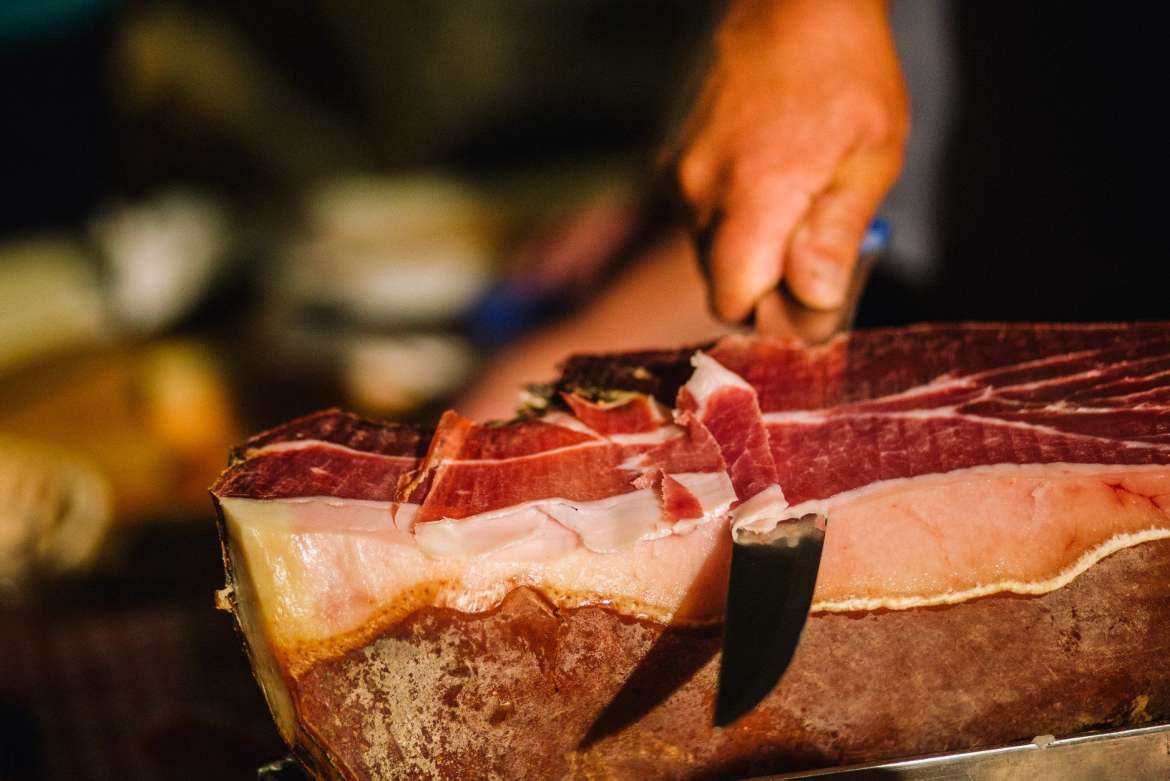 Dalmatian prosciutto © TZ Vrgorac
Dalmatian prosciutto © TZ Vrgorac
Baranja kulen, Dalmatian prosciutto, Drniš prosciutto, Lika potatoes, Dingač wine and Neretva mandarins are the premium six Croatian protected produce chosen to be among the European 100. All of the Croatian protected produce is already recognised at a national and at an EU-level and designated its status based on its unique place of origin.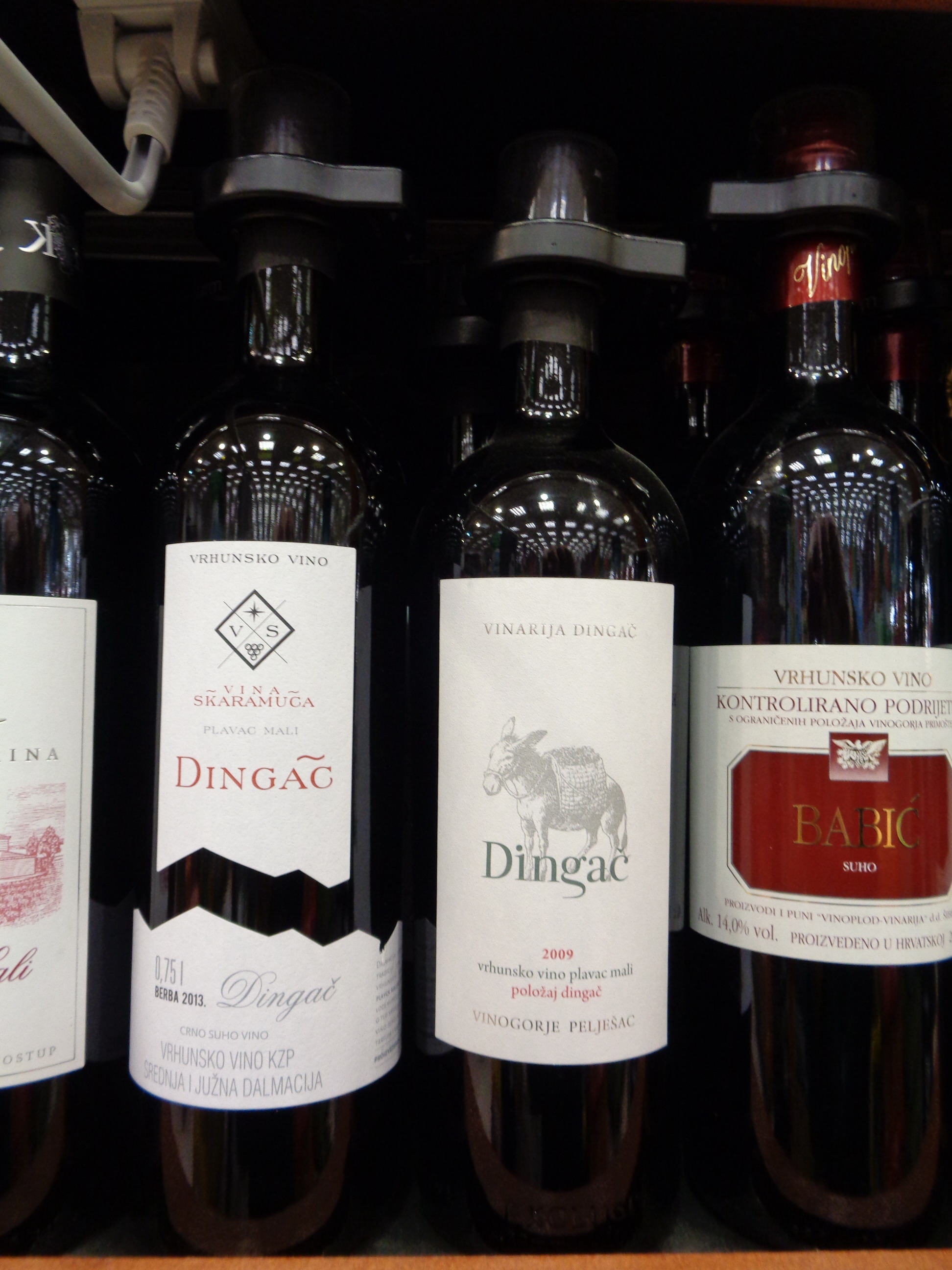 Dingač wine © Silverije
Dingač wine © Silverije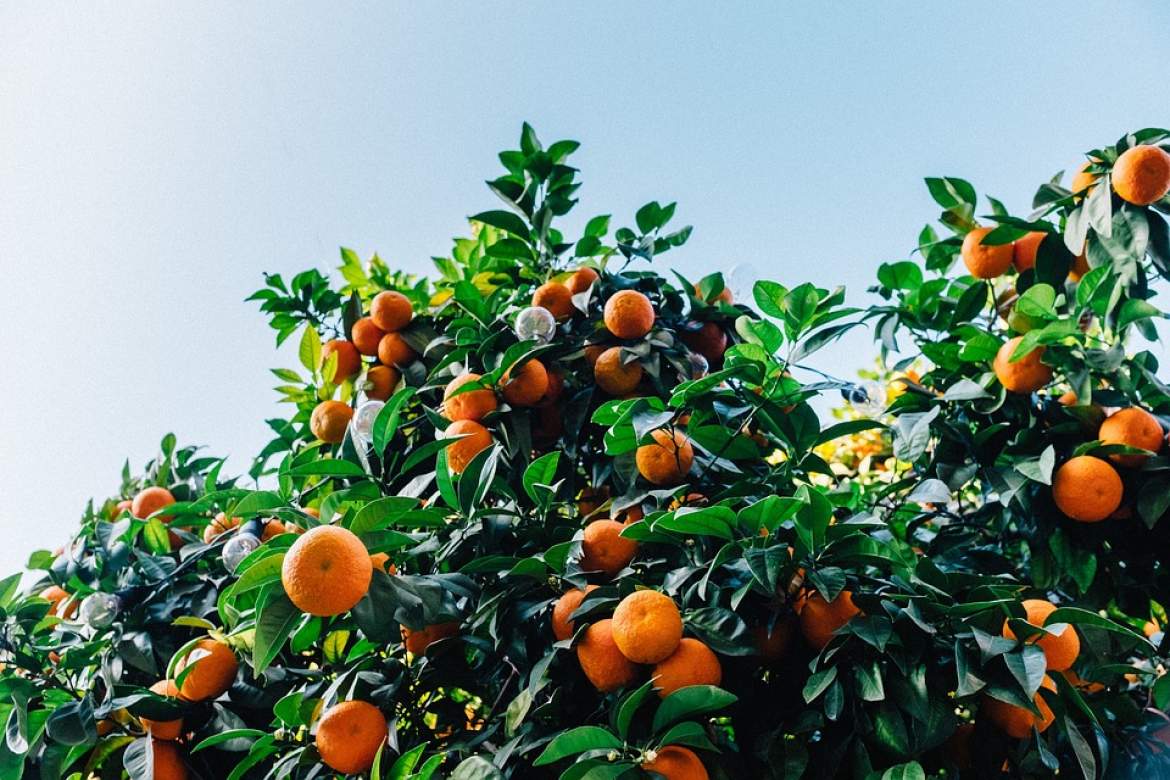 Neretva Mandarins
Neretva Mandarins
The European products will be specially marked and receive special privileges when they go on sale in China. Alongside the Croatian protected produce, other items on the European list are French champagne, Greek feta cheese, Italian Parma prosciutto, Italian mozzarella, Irish whiskey and Portuguese port. On the Chinese list of products are distinct varieties of rice, bean and vegetable products, some of which will already be popular with Europeans who eat or cook Chinese cuisine.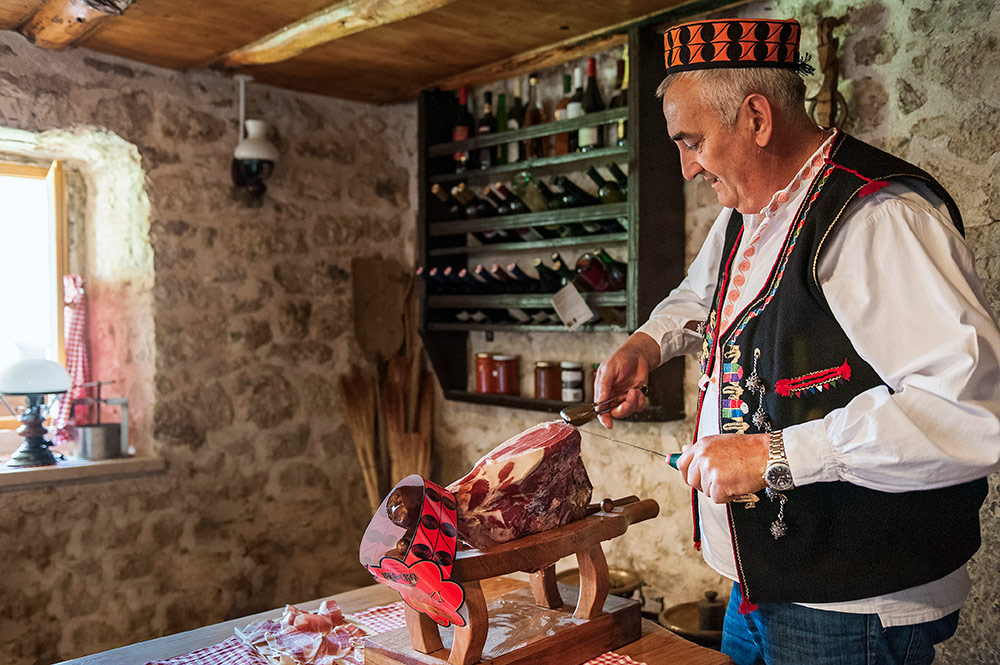 Drniš prosciutto © Tourist Board of Drniš
Drniš prosciutto © Tourist Board of Drniš
The full list of Croatian produce protected at an EU-level currently includes Istrian olive oil, Dalmatian prosciutto, Pag cheese, Lika lamb, Poljički Soparnik, Zagorje turkey, Korčula olive oil, Istrian prosciutto, Sour cabbage from Ogulin, Neretva mandarins, Slavonian honey, Drniš prosciutto, Cres olive oil, Pag salt, Baranja kulen, Bjelovarski kvargl, Varaždin cabbage, Pag lamb, Šolta olive oil, Meso 'z tiblice, Zagorje mlinci, Krk prosciutto, Lika potatoes, Slavonian kulen, Krk olive oil. Baranja kulen, featured within a traditional Slavonian platter © Romulić & Stojčić
Baranja kulen, featured within a traditional Slavonian platter © Romulić & Stojčić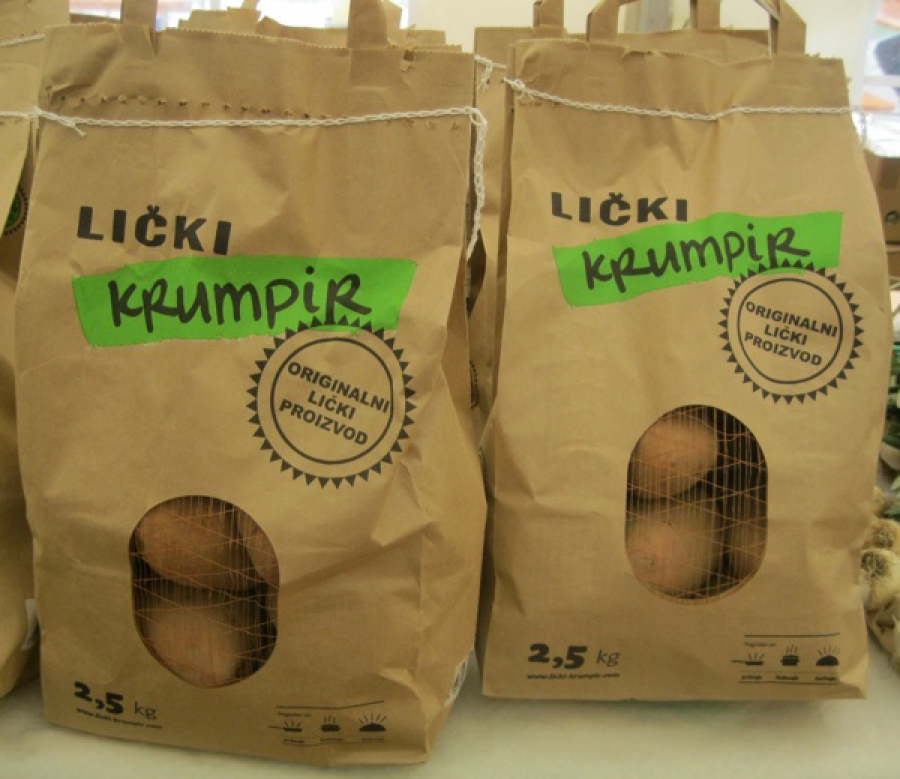 Lika Potatoes
Lika Potatoes
For the latest travel info, bookmark our main travel info article, which is updated daily.
Read the Croatian Travel Update in your language - now available in 24 languages
Zagreb and Stablina Share First Place at 23rd Ladja Marathon in Neretva
August 8, 2020 - Zagreb and Stablina are the winners of the 23rd Ladja Marathon on the Neretva River.
HRT reports that these two crews alternated in the lead throughout the race. Zagreb was the first to enter the finish line, but the judges later decided that both teams were the winners and that there would be no second place, for the first time in the history of the competition.
The reason for this move was that at one point in the race, the Zagreb team took away the advantage from Stablina.
Sveti Ilija from Metkovic came in third.
On the 22.5-kilometer-long track from Metkovic to Ploce, organized by the Neretva Boatmen's Association, 35 crews competed for the Great Shield of Prince Domagoj. Each boat crew consists of 10 rowers, a drummer and helmsman.
Before arriving in Opuzen, the crews of Stablina, Crni put Metkovic, Zagreb and Slivno were in the lead, and in Komin, for more than half of the race, the leaders were Zagreb and Stablina. After almost two hours of racing, Stablina and Zagreb were still at the top, followed by two Metkovic crews, Sveti Ilija and Crni put.
This year's marathon was held without spectators and under the auspices of the President of the Republic Zoran Milanovic.
Last year, Gusari from Komin celebrated.
To read more about lifestyle in Croatia, follow TCN's dedicated page.
Neretva's Ladja Marathon to be Held Under Special Conditions
Southern Dalmatia if full of tradition, and it extends far beyond the tourist hub of Dubrovnik which receives far more publicity than other nearby areas. The Neretva valley and the Neretva river are not only the 'fruit baskets' of the country, delivering tonnes of produce to all corners of Croatia, these areas are also steeped in tradition. One such tradition is the Ladja Marathon, traditionally held every August.
As Morski writes on the 21st of July, 2020, preparations for this year's Neretva spectacle Ladja Marathon, which will take place on Saturday, August the 8th, on the 22.5-kilometre0long regatta course from Metković to Ploče, are proceeding according to schedule, despite a series of unforeseen circumstances caused by the coronavirus pandemic and the measures which need to be respected as a result of it, local portal Rogotin.hr writes.
At the meeting of the members of the Management Board and the Supervisory Board, a number of things were discussed in order for everything to go well in the face of the current unprecedented situation with the ongoing global pandemic. The news is that this year, due to the presence of the new coronavirus, there will be no presidential ship on the Neretva river, and the President of the Republic of Croatia Zoran Milanović will follow the race from one of the other ships that will be sailing along the Neretva that day.
As this year's Ladja Marathon will be broadcast live by HRT for the first time, the organisers will ask as many spectators as possible to stay at home, and those who choose to follow the race live along the banks of the Neretva will be invited to keep a distance from each other and wear protective masks at all times.
These are just some of the decisions that have been made in order to try to ensure that the much-loved spectacle goes ahead as normal as possible under these circumstances, and the public will be informed more and more about everything they can expect for 2020's Ladja Marathon at the press conference of the umbrella association of Neretva boatmen, which will likely be organised next week.
For more, follow our lifestyle page.
Dubrovnik-Neretva: Water Utility Infrastructure Project Contracts Signed
As Morski writes on the 30th of May, 2020, in Opuzen, contracts were signed for the development of water utility infrastructure in Dubrovnik-Neretva County. The contracts refer to projects in areas in the Neretva area, including Kula Norinska, Opuzen and Slivno, as well as Ston, the islands of Lopud and Mljet, and Gruda and Orebic, and the total value stands at a massive 158 million kuna without VAT.
The contracts were signed by the General Manager of Hrvatske vode (Croatian waters) Zoran Djurokovic with the directors of the utility companies of Dubrovnik and Opuzen and the municipalities of Kula Norinska, Ston, Slivno, Mljet, Konavle and Orebic.
Minister of Environmental Protection and Energy Tomislav Coric expressed his satisfaction with the fact that local self-government units from Dubrovnik-Neretva County were agile enough to prepare everything and thus enable the continuation of these important projects which will cover the Neretva area and beyond, extending even to the aforementioned southern Dalmatian islands.
Now, at a time when Croatia is far from in an enviable economic position as a result of the ongoing coronavirus pandemic, and when the continuation of many previously planned investments has been called into question, these projects and those similar to them are very important, both due to the fact that in this way, construction operations will be launched, and also due to the fact that they're going in the direction of improving the living standards of our citizens. This is a difficult job and a job that takes time and will not end until all of our fellow citizens have a connection to the public supply system and the public drainage system, and I'm sure that we'll complete it successfully,'' said Coric.
Branko Bacic MP agreed with the fact that this is a long and extensive process, recalling the fact that fourteen years ago, Opuzen Mayor Ivo Mihaljevic spoke about the need to complete the wastewater treatment system. He thanked Minister Coric and the General Manager of Hrvatske vode, Zoran Djurokovic for the fact that these projects rely on the national component, ie the funds from Hrvatske vode, which should be especially valued in a situation where the Croatian economy is suffering the consequences caused by the coronavirus crisis.
''These projects are important for our municipalities and cities, they're important for water protection, for serious agriculture and for environmental protection, and that's why I'd like thank the Minister once again,'' said Bacic.
Dubrovnik-Neretva County Prefect Nikola Dobroslavic stated that this was another step forward in solving the problems in the Neretva and wider southern Dalmatian area and added that a lot was being done, pointing out as an example the important Donja Neretva project.
''The County, Hrvatske vode and the competent ministry have started the SU project of the irrigation of the lower Neretva; now we're going forward with the first phase and I'm convinced that this project, the total value of which is about 500 million kuna, will be realised in full and thus solve the problem of salinisation, and also conduct irrigation of the entire area. The projects for which contracts are being signed are extremely important for the entire county.
Zoran Djurokovic confirmed that extremely important and valuable projects are being implemented in Dubrovnik-Neretva County and the Neretva area, saying, among other things, that in the Neretva Valley, projects are currently being implemented in Opuzen, the mouth of the Neretva river, Komin… around 120 million kuna is being invested, and if we take into account the Metkovic and Ploce agglomeration and other projects within the county, we're talking about almost a billion kuna.
For more, follow our business page.
World's Biggest Welcome in Croatia: Day 49 - Ston to Ploče (Kayak, Paddle, Bike, Row)
May 10, 2019 - Putting Croatian adventure tourism on the map, with the biggest welcome in the world. Day 49 of this incredible 2011 adrenaline trip covering 2,500 km along the Croatian coast.
The World's Biggest Welcome, an ambitious adventure tourism project in 2011 in Croatia enters Day 49 of this 2019 appreciation of one of the finest tourism promotion projects ever in Croatia.
The plan? To showcase the diversity and fabulous offer of adventure tourism in Croatia by following a GPS route the length of the Croatian coast in the shape of the word 'Welcome' - thereby creating the biggest welcome in the world from a hospitable tourism country.

Day 49 moved from Ston to Ploče.
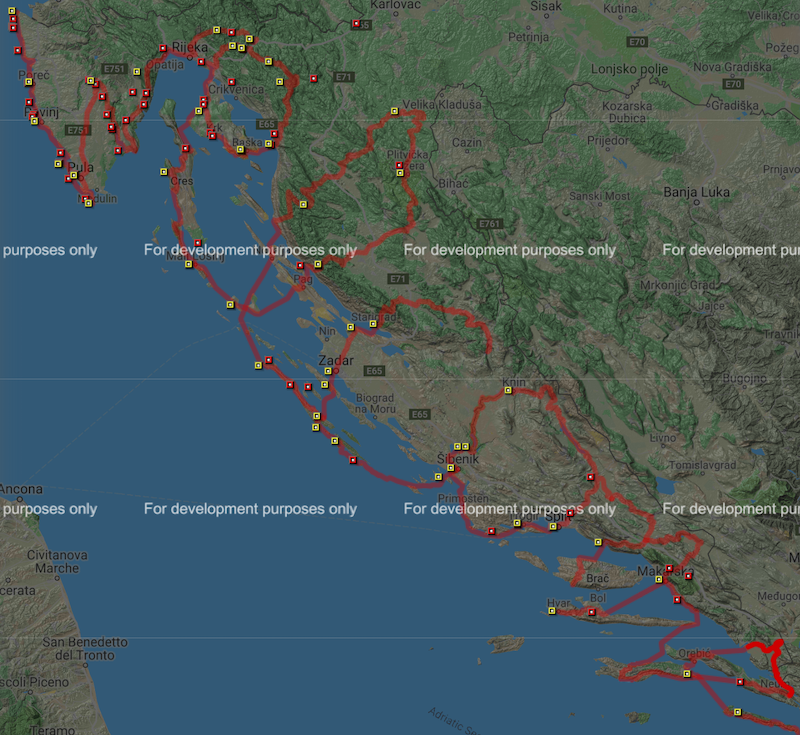
61 kilometres for the day: 3 km by kayak and paddling from Ston to Neum, followed by 33 km bike ride from Neum to Metković, and 25 km from Metković to the Neretva firth rowing in an old Neretva style boat to continue forming the ‘E’ in ‘Welcome’.
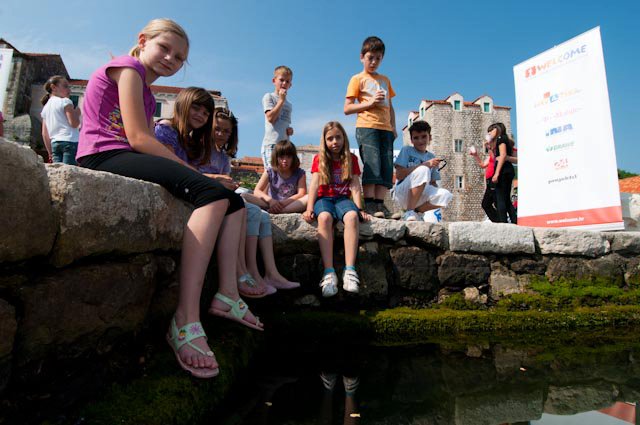
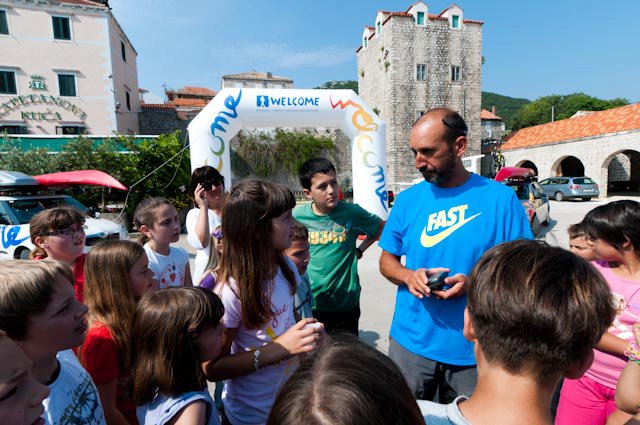
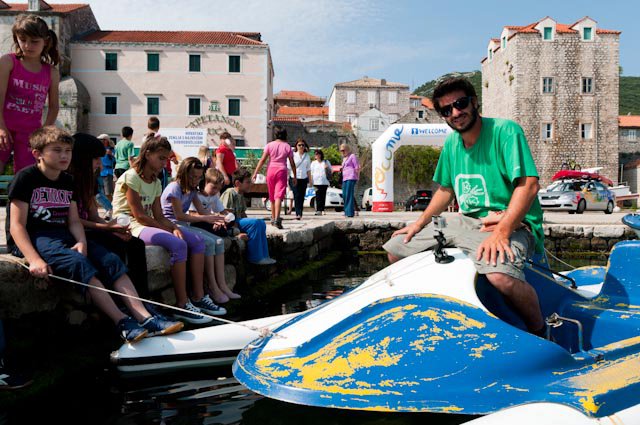
Day 49 kicked off with a send-off from the kids of Mali Ston.
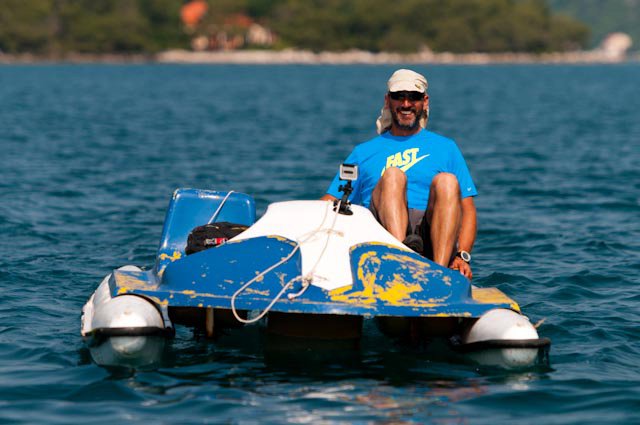
Lacko trying out his new vessel.
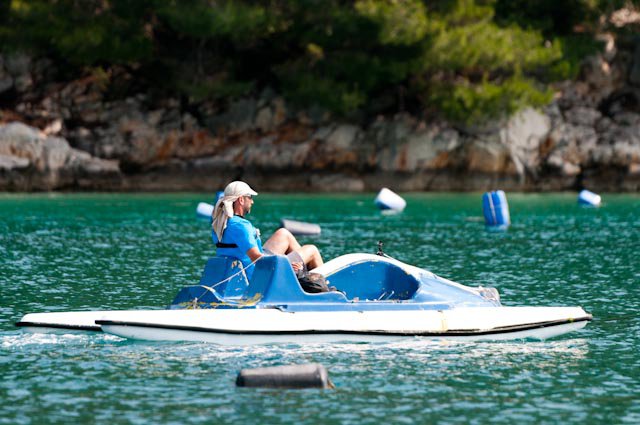
Lacko giving tribute to Czech adventurers who often choose paddle boats as their transport on the Adriatic.
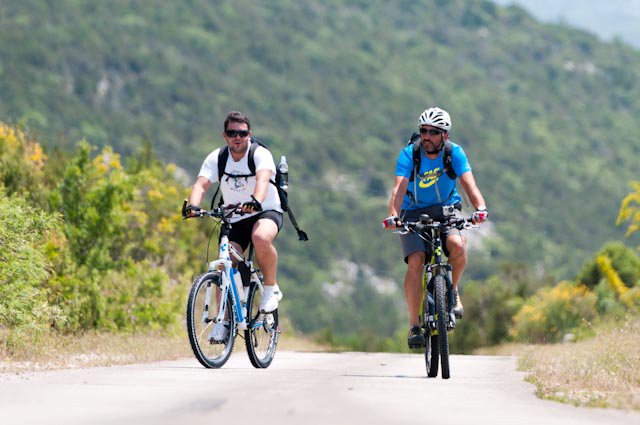
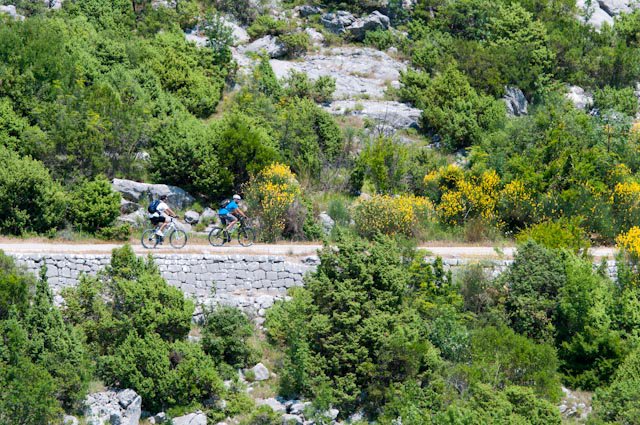
They traded in their paddleboats for bikes and set off towards Bijeli Vir.

Passing Lake Kuti along the way.
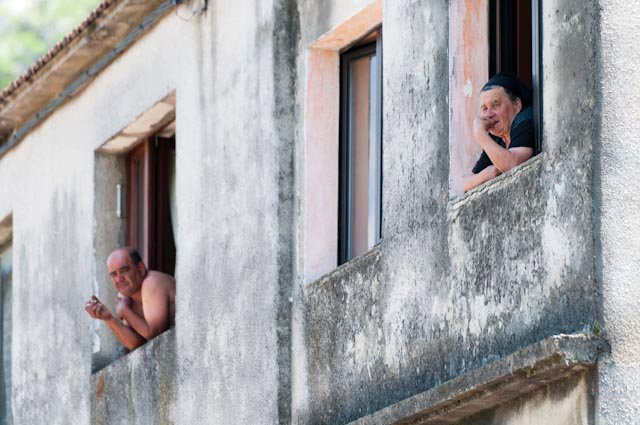
Locals in Bijeli Vir admiring their traveling circus.
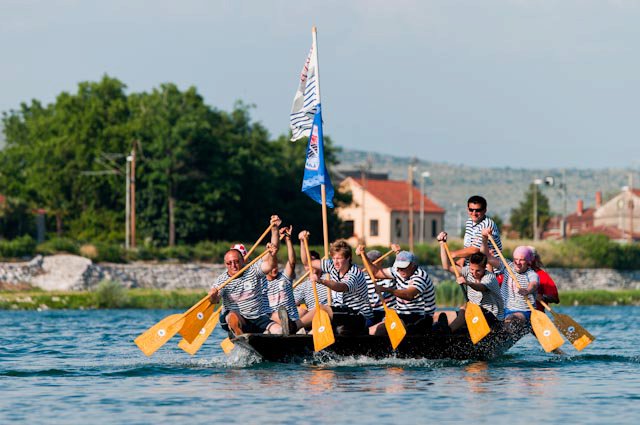
Lacko made it to Metković and rowed with the team from Krvavac 2 in an original ship from Neretva.

Passing by the Kula Norinska tower.
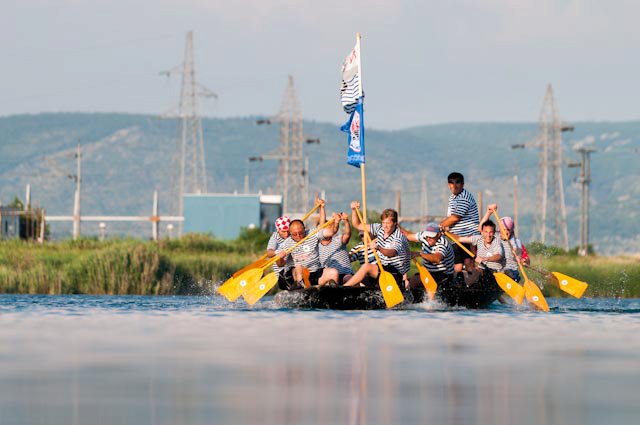
Krvavac 2 arriving in Opuzen where Kominski pirates gave Lacko a proper welcome.
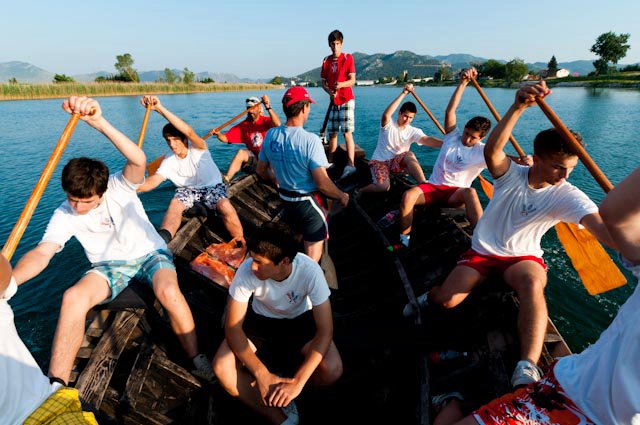
The Kominski gusari pirate ship.

They even let Lacko steer for a bit!
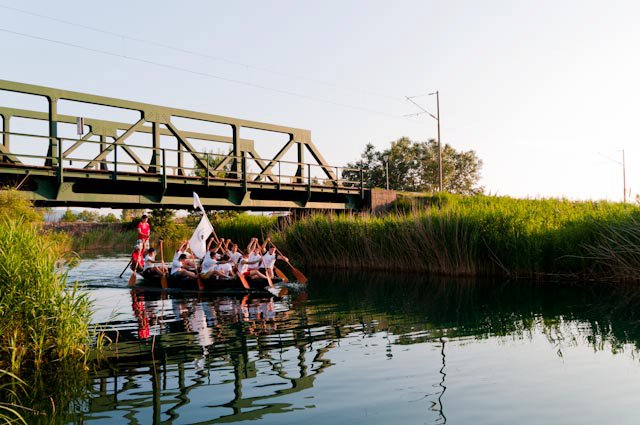
Kominski gusari pirates in Crna rijeka.
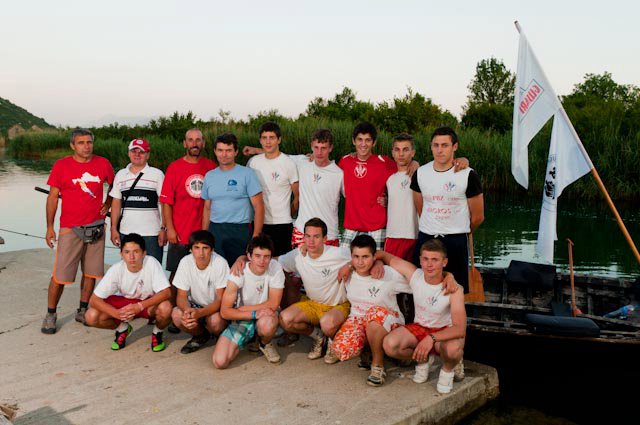
The day ended with a group photo.
A key part of the project was promoting tourism, and the official website has details of the key places visited during the day.
You can see the entire project on the Welcome website, as well as much more of Luka Tambaca's stunning photography on the Welcome Facebook page.
Tune in tomorrow for Day 50, as Lacko and the team move from the Neretva to Korčula.
To follow the whole project from the start, follow the dedicated TCN page.


